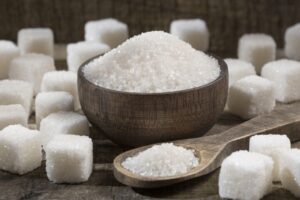
Ukraine may export an additional 46,000 tons of sugar to the EU as early as 2025, according to a statement by the National Association of Sugar Producers of Ukraine “Ukrtsukor” on its Telegram channel.
The industry association recalled that on October 29, 2025, an updated trade agreement between Ukraine and the European Union came into force, which provides for a 400% increase in the tariff quota for white sugar to 100,000 tons. As part of the agreements reached, the quota for the current year has also been revised, which will allow Ukrainian sugar producers to export an additional 46,625.8 tons of white sugar to the EU by the end of 2025.
According to Cabinet of Ministers Resolution No. 1368 of October 29, 2025, this volume will be distributed among exporters in proportion to the volume of exports of the specified products to the EU during January-May 2025.
Ukrtsukor specified that in October 2025, Ukraine exported 44.4 thousand tons of sugar worth over $20 million, of which only 2% was supplied to EU markets. Lebanon was the leader in terms of export volume, receiving 48% of all sugar. Syria and North Macedonia were also among the top three importers of Ukrainian sugar in October.

Ukraine exported 580,000 tons of sugar during the 2024-2025 marketing year (August-September), which is 32% of the country’s production, which is 16% less than in the previous marketing year, when 692,000 tons were supplied to foreign markets, according to the National Association of Sugar Producers of Ukraine “Ukrtsukor.”
The industry association noted that of the total exports in 2024/2025, 17% went to EU countries and 83% to the global market. Last season, the ratio was 77% to the EU and 23% to the global market.
The main importers of Ukrainian sugar in 2024/2025 MY were the EU (17%), Turkey (14%), Libya (10%), North Macedonia (8%), Lebanon (5%), and Somalia (5%). Among the EU countries, the main buyer of Ukrainian sugar was Bulgaria, which accounted for 59% of the total volume.
Ukrtsukor noted that Ukraine has already begun harvesting sugar beets for processing in the 2025/2026 season. The estimated area to be harvested is 198,000 hectares. Sugar production is forecast at 1.5 million tons.
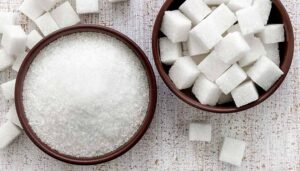
Astarta, Ukraine’s largest sugar producer, reduced sugar sales by 29% in January-June 2025, the agricultural holding’s press service reported.
Astarta noted that in the first half of 2025, the segment’s revenue amounted to EUR79 million, which is 38% less than in the same period last year.
This was caused by an 11% drop in sugar prices and a 29% decrease in sales volumes, the agricultural holding explained.
According to the report, sugar exports accounted for 47% of the segment’s revenue, compared to 58% in the first half of 2024. The main export destinations were Libya, Macedonia, and Israel. Astarta’s share in Ukraine’s sugar exports was 24%.
Astarta’s team is currently actively preparing for the sugar beet harvest and processing season.
Astarta is a vertically integrated agro-industrial holding operating in eight regions of Ukraine and the largest sugar producer in Ukraine. It comprises six sugar factories, agricultural enterprises with a land bank of 220,000 hectares, dairy farms with 22,000 head of cattle, an oil extraction plant in Hlobine (Poltava region), seven elevators, and a biogas complex.
In 2024, Astarta increased its net profit by 34.5% to EUR83.25 million, while its consolidated revenue decreased by 1.1% to EUR612.15 million.
In the first quarter of this year, the agricultural holding’s revenue fell by 24.9% to EUR124.58 million, while net profit fell by 28.8% to EUR6.42 million.
On June 12 this year, the shareholders’ meeting approved the payment of dividends for 2024 in the amount of EUR0.5 per share for a total of EUR12.5 million, which is in line with the figures for the previous two years.
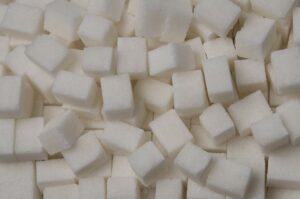
Ukrainian sugar factories are capable of producing 2.2 million tons of sugar, but processors are currently unable to sell all their products, so they are maintaining production at 1.2-1.3 million tons. However, this can only happen if domestic consumption returns to pre-war levels and new export markets open up, said Yana Kavushevska, head of the National Association of Sugar Producers of Ukraine “Ukrtsukor.”
“If we have 30 factories that can produce sugar, probably 2.2 million, if we had markets where we could sell this sugar steadily and with some profit that satisfies producers, that would be quite good. This is what we can optimally grow and process. The optimal capacity of existing sugar factories is 2.2 million tons,” she said on Ukrainian Radio.
She noted that the main problem for sugar producers now is export markets, as the domestic market will not be able to absorb the entire volume of production.
“We really hope that the domestic market will recover to at least its pre-war level by 2022. That would be 1.2-1.3 million tons,” Kaushevska said.
The expert clarified that before the full-scale invasion, even after the loss of part of the territories in Donetsk, Luhansk regions, and Crimea, domestic sugar consumption in Ukraine amounted to 1.2-1.3 million tons. However, after the start of the full-scale invasion, domestic consumption fell to 900,000 tons. Thanks to the opening of the European market during the autonomous trade measures (2022-2024 – IF-U), sugar producers were able to supply 300,000 tons to Europe.
“We now have restrictions (on sugar supplies to the EU – IF-U), and accordingly, we need to decide where to send these 300,000 tons,” she said.
The head of Ukrtsukor stated that in 2025, Ukrainian farmers reduced the area under sugar beet cultivation to 220,000 hectares, which is 15.4% less than last year’s figures.
According to her, Ukrainian processors were very disappointed with the quotas for sugar supplies to the European Union, which were announced in the spring of 2025 and were planned at 67,000 tons. Currently, this volume has been increased to 107,000 tons of sugar, but in previous years, deliveries to the EU reached 473,000 tons.
The head of the industry association recalled that in 2024, the sugar industry showed record export figures – over 740,000 tons, thanks to which Ukraine received over $420 million.
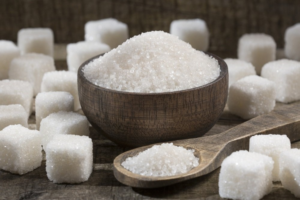
The Czech Chamber of Food Industry has expressed concern over the European Union’s plans to significantly expand duty-free import quotas for Ukrainian agricultural products. A press release published on July 15 states that this threatens the Czech sugar industry. According to the Chamber, the quota for duty-free sugar imports from Ukraine to the EU could be increased from the current 20,070 tons to 100,000 tons — five times more. As a result, Czech producers fear a decline in self-sufficiency and a repeat of the situation with the closure of the plant in Hrušovany nad Evšovkou, which was linked to the influx of cheap imported sugar.
The Chamber’s president, Dana Večeržová, said: “If quotas continue to rise, we risk seeing the closure of new enterprises and ineffective investments not only in the sugar industry, but also in other strategic sectors.”
The decline in the Czech Republic’s self-sufficiency in sugar creates dependence on imports and devalues investments. Producers are calling on the government to abandon the quota increase and demand the introduction of restrictive mechanisms (automatic protective measures, price thresholds, and individual quotas) in negotiations with the European Commission.
Poland, Slovakia, Hungary, Bulgaria, and Romania have expressed their support for the Czech position. They signed a joint declaration calling on the European Commission to introduce protective measures for the most vulnerable sectors of the EU — sugar, grain, and meat.
In 2024, the Czech Republic imported 27.9 million kg of sugar from Ukraine (out of a total of 81.1 million kg) worth CZK 461 million. This is several times higher than the 2021 level of 3.7 million kg.
A fivefold increase in quotas for Ukrainian imports to 100,000 tons could seriously weaken the Czech sugar industry, threatening jobs and infrastructure.
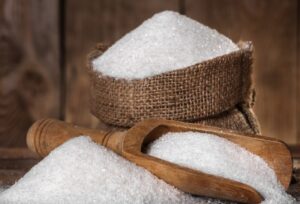
The Ministry of Agrarian Policy and Food has allocated sugar quotas for export to European Union countries, which will remain in effect until August 5, 2025, according to the ministry’s press service.
According to the report, the sugar quota has been distributed among exporters in proportion to their actual exports of this product to EU countries in January-May 2025.
The quotas were allocated to the following companies: TOV “Radehivsky Sugar” — 3,977.6 tons, TOV “Tsukoragroprom” — 1,700.9 tons, TOV “PK ”Zorya Podillya” — 927.6 tons, PJSC “Teofipol Sugar Plant” — 915.1 tons, LLC “Narkevychi Sugar Plant” — 688.8 tons, LLC “Novoorzhytskyi Sugar Plant” — 598.4 tons, LLC “Starokostiantynivtsukor” — 451.6 tons, LLC “Shamraivsky Sugar” — 381.5 tons, LLC “Shepetivka Sugar” — 349.5 tons, LLC “Signet-Center” — 259.4 tons, LLC “Agrocomplex ”Green Valley” — 216.5 tons, Kraievyd LLC — 184.2 tons, Novomyrhorodsky Sugar LLC — 140.7 tons, Prisma-14 LLC — 121.7 tons, and Krasylivsky Sugar Plant PJSC — 94.0 tons.